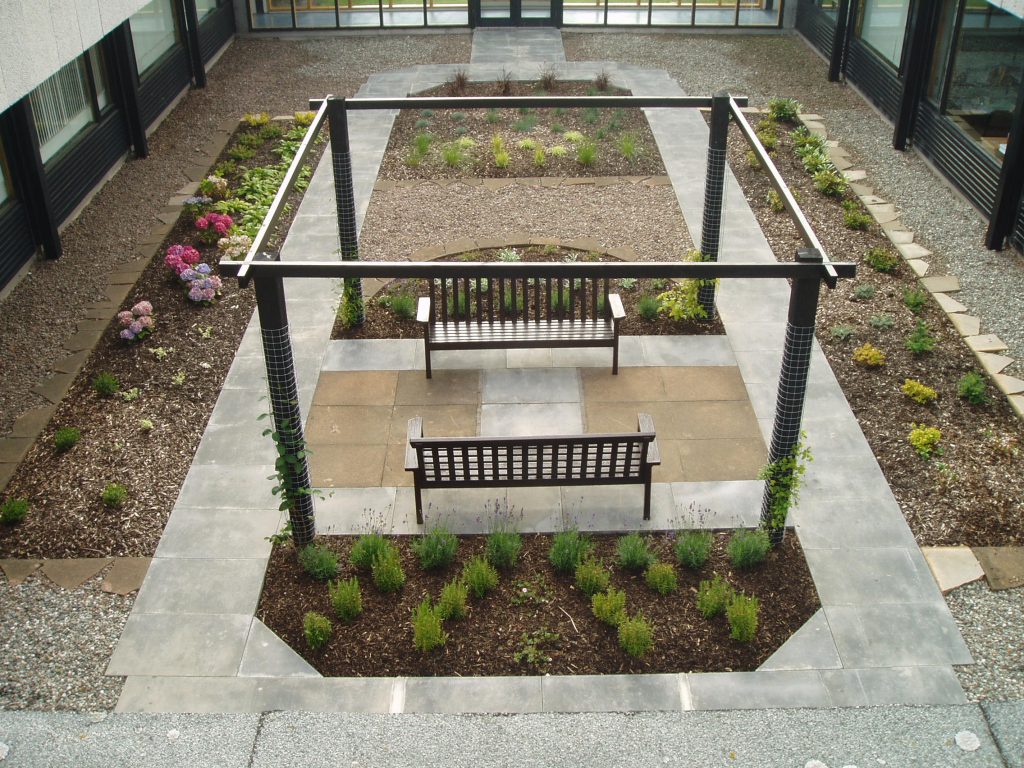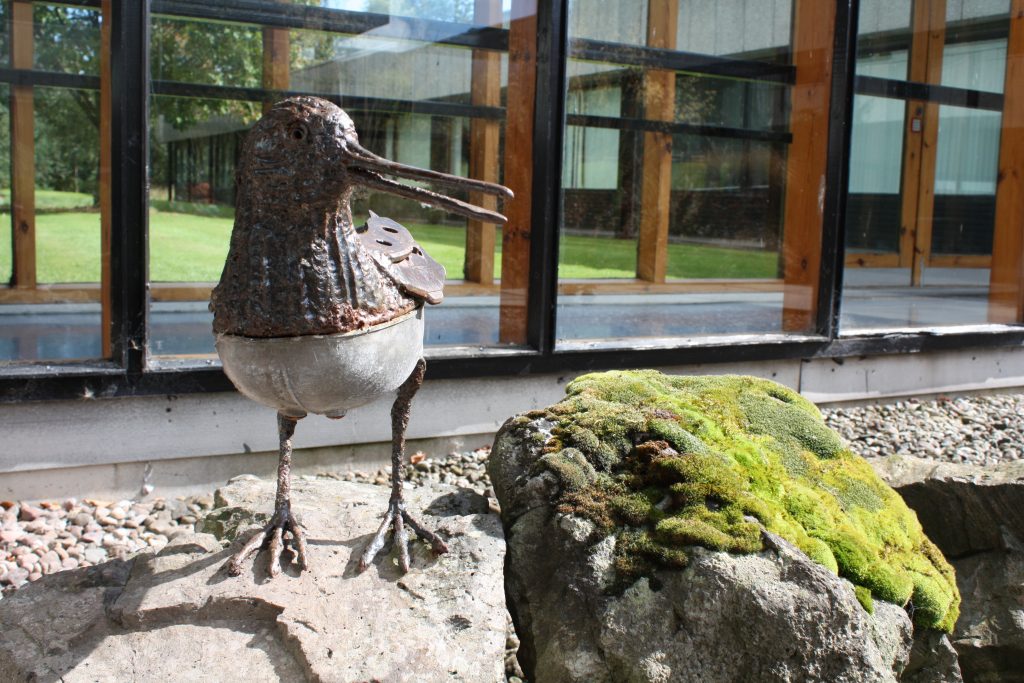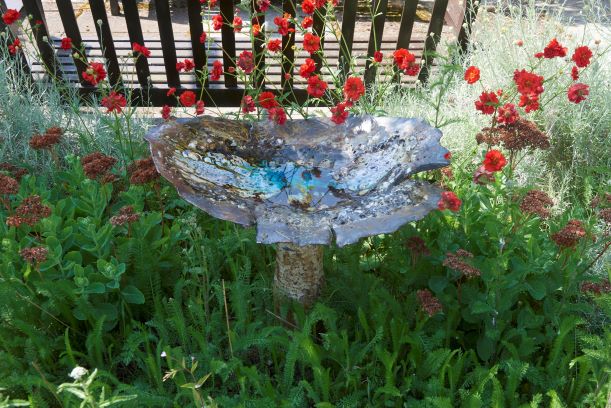While the Pathfoot Building is closed, the Art Collection will each week focus on an object of interest. You can also search our entire collection online here.

Oyster Catchers (3 pieces)
Helen Denerley
(Scrap and found metal, 2007)
In 2007 in the Crush Hall in the Pathfoot Building, plans were being made for a major exhibition of Willie Rodger‘s work. During the early stages, it was decided to include several artistic Rodger family members, alongside Willie himself, in this display, and in addition the courtyard just off the Crush Hall was chosen for a special overhaul. One of Willie’s sons Guy redesigned this space as a wheelchair-accessible gravel garden.

Oyster catchers are wading birds, with distinctive black and white plumage and long orange beaks. Every spring, several pairs arrive on the University of Stirling campus where they build their nests and raise their chicks on the ground on pebbles or rocks. During the design and construction stage of this courtyard, a pair of these birds started to build a nest there, in the new gravel, halting progress for several weeks***(see below for an update).

Serendipitously, the Art Curator Jane Cameron discovered that leading wildlife artist Helen Denerley had created some Oyster catchers from scrap metal, and three sculptures were purchased to be placed in the newly created garden.

And Robin Rodger, another of Willie’s sons, wrote a poem, for the new space.

The Oyster catcher courtyard now flourishes with beautiful grasses, flowers and climbers, providing a restful sanctuary for students and staff…

(kindly loaned by Maggie Inall in memory of her husband,
Dr. Inall, a surgeon at Stirling Royal Infirmary).
…except when the birds return to nest.
Then the doors remain closed to the public, and peace reigns for a while, until the birds have flown.
from the Art Collection office window in May 2019
We hope that they are enjoying their space undisturbed in this unusual spring.
***PS
We are grateful to Alison Campbell for giving us more details from this time.
Here is the text of an email she sent to the Terry Wogan show on Radio 2 in Spring 2007:
“Yesterday I went on an outing to Stirling University to see the gems of their art collection, and indeed the paintings and the sculptures, displayed as they are in the main concourse of one of the teaching buildings, are beautiful and inspirational.
Most popular exhibit of the day, however, was in a small courtyard which was supposed to be undergoing re-landscaping.
A single-minded and bolshie oyster-catcher has decided that the pebbled path is the best location for sitting tight on her eggs, and therefore entry is barred and all work has stopped till mid-June when the chicks will be fledged”.
Alison tells us that one of the chicks when it hatched was named Terry…and that the Art Collection got three more mentions on the radio during the course of that year.